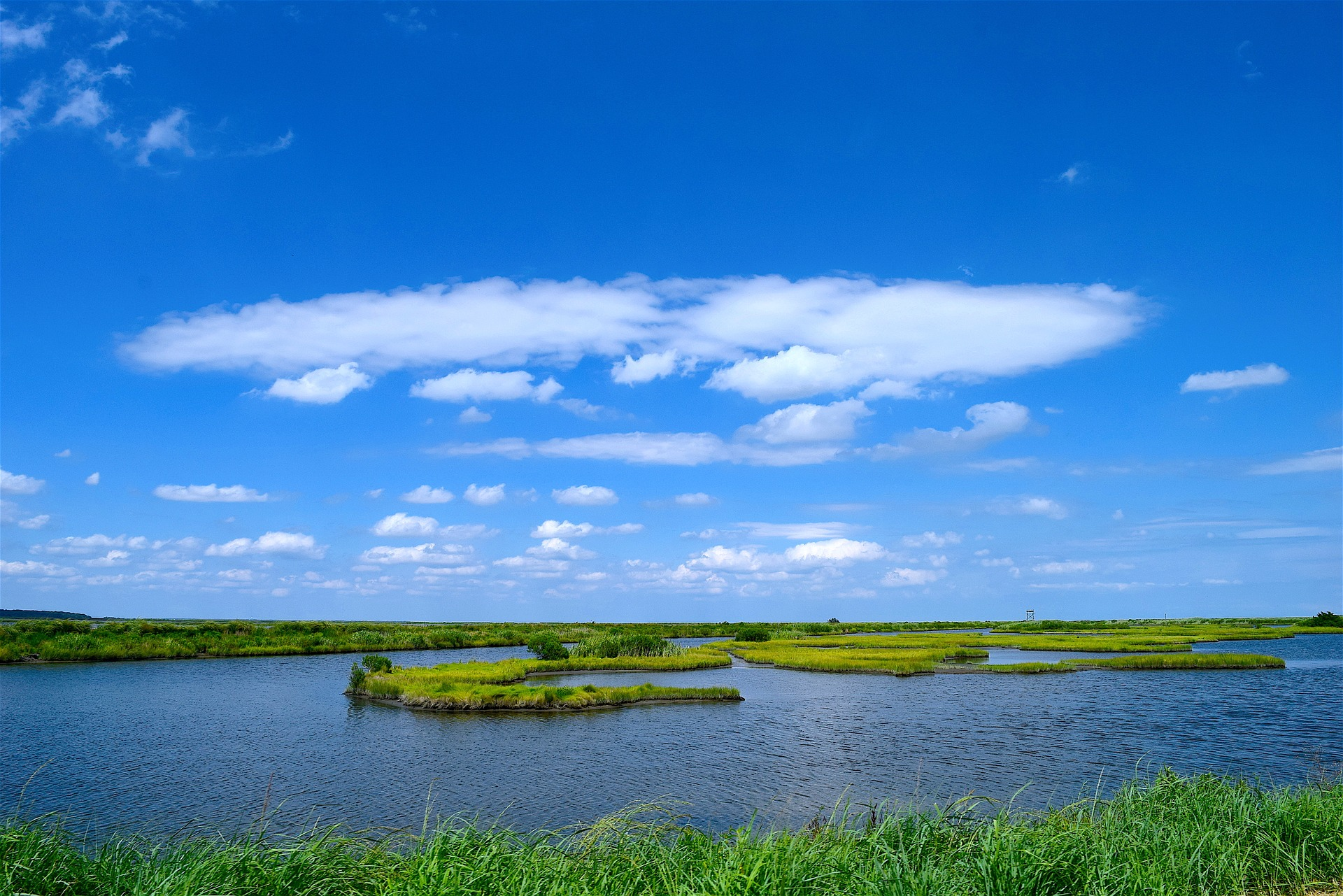
By: Anika Hazra, National Conservation Communications Coordinator
The role nature plays in mitigating the impacts of climate change is becoming more and more apparent, and the need to implement nature-based climate solutions is taking greater hold in the minds of scientists, conservationists and policymakers.
Trees are touted as a mechanism for storing excess carbon from the atmosphere, but they are not the only life form that does this. All types of plants take in carbon to survive, including those in marine habitats. In fact, marine plants are quite an effective form of carbon storage – as such, the term ‘blue carbon’ has come into existence in the conservation realm.
Science class refresher – the carbon cycle
In order to understand why blue carbon has become a climate action strategy, we need to understand how plants naturally remove carbon from the atmosphere as part of the carbon cycle.
If you remember your high school biology class, you may recall that plants produce the sugars they need for energy through photosynthesis. They take in carbon dioxide from the atmosphere, as well as water and solar energy, to produce glucose (a simple sugar) and oxygen.
While plants take in carbon through photosynthesis, they also release carbon back into the atmosphere through cellular respiration – a process used to transform glucose into usable energy.
Carbon is a building block for all living things, and is constantly cycled between the biosphere and the atmosphere to sustain life on Earth – with around 83% of cycled carbon going through the ocean.
Carbon is also stored in organic waste and dead organisms, which turn into fossil fuels after millions of years of decomposition deep below the surface. The use of fossil fuels, land-use changes and industrial processes are major sources of carbon dioxide emissions, causing the global climate to shift.
Many people are aware of the role of burning fossil fuels in climate change, but another important source of carbon dioxide emissions is the degradation of ecosystems that store carbon, including marine ecosystems.
What is ‘carbon sequestration’?
If plants both take in and release carbon, are they actually storing it? While plants take in a lot of carbon dioxide to create the sugars they need, they release about a third of that carbon dioxide to produce energy. All in all, plants sequester, or hold on to, more carbon than they release, making them a carbon sink.
So, what makes carbon ‘blue’?
‘Blue carbon’ is carbon captured by the world’s coastal ecosystems. These marine ecosystems include seagrass meadows, tidal wetlands, salt marshes and mangroves.
While coastal ecosystems like seagrass meadows and tidal wetlands cover much less area than forests, they capture three to five times more carbon, and store it for much longer.
The key to such effective carbon storage is the sediments and plant root systems of these ecosystems; around half of the world’s blue carbon is stored in coastal ecosystem sediments.
Protecting blue carbon sinks
There’s a strong case for keeping marine ecosystems intact, considering just how much carbon they remove from the atmosphere in comparison to other ecosystems. For example, one hectare of a salt marsh can store the amount of carbon emitted by 488 cars per year.
However, destructive human activities cause the carbon stored in marine ecosystems to be released. It is estimated that around 1.02 billion tonnes of carbon dioxide are released each year from the degradation of coastal ecosystems alone – they are one the most threatened ecosystems, with hundreds of thousands of hectares destroyed each year! In addition, marine ecosystems don’t sequester carbon as effectively when they are degraded, making their protection of even greater importance.
The ability of marine ecosystems to continue storing excess carbon from the atmosphere is also dependent on how climate change will impact them. These impacts can be quite complex, and can vary from one marine ecosystem to another – and even from one species to another within the same ecosystem.
Protecting and restoring marine ecosystems not only allows for carbon storage – these ecosystems also provide other services, like protection from storms and flooding, preventing shoreline erosion and providing nurseries for fish.
The protection of marine environments, especially coastal ecosystems, offers an effective solution for climate change mitigation that should be explored in addition to solutions currently in practice.
References:
- https://www.bbc.co.uk/bitesize/guides/z2vbb9q/revision/3
- https://earthobservatory.nasa.gov/features/CarbonCycle
- https://www.iucn.org/resources/issues-briefs/blue-carbon
- https://media.nationalgeographic.org/assets/file/changing-climate-ch2.pdf
- https://www.nature.com/scitable/topicpage/photosynthetic-cells-14025371/
- https://oceanservice.noaa.gov/facts/bluecarbon.html
- https://www.pc.gc.ca/en/nature/science/climat-climate/carbone-carbon
- https://scied.ucar.edu/carbon-cycle
- https://serc.si.edu/research/laboratories/biogeochemistry/projects/blue-carbon
- https://www.thebluecarboninitiative.org/
- https://www.unenvironment.org/news-and-stories/video/blue-carbon
